North Africa - Operation TORCH
The Allied invasion of French North Africa begins. There are 500 warships and 350 transports involved. There are 3 main sectors of operations. The Western Task Force has sailed direct from the United States and sends in landings at 3 places on a 200-mile front around Casablanca. There are 35,000 troops from the US 2nd Arm, 3rd Inf and part of the 9th Inf Divs. Gen Patton commands the ground forces. The naval forces include 2 battleships, 1 fleet carrier, 4 escort carriers and numerous cruisers and destroyers, led by Adm Hewitt. The Center Task Force, to land in and near Oran, is led by Gen Fredendall and Commodore Troubridge. There are 39,000 troops from the US 1st Inf and Arm Divs. The naval force includes 2 escort carriers as well as many smaller ships. The ex-US Coast Guard cutters Hartland and Walney attempt to enter Oran harbor to land US troops to secure the port installations and prevent sabotage. The Hartland is sunk by the French destroyer Typhon and the shore batteries with the loss of 35 men. The Walney is sunk by the French shore batteries and the French destroyers Epervier and Tramontane with the loss of 82 on board. The Eastern Task Force lands at Algiers and is led by Adm Burrough and Gen Ryder. There are 52 warships and 33,000 soldiers. The troops are from the US 34th Inf Div with parts of 9th Inf and 1st Arm also present. The only large British assault force, 78th Div, is landed here. In support of the whole operation and on guard against the still-formidable Italian Fleet in the British Force H from Gibraltar under Adm Syfret with 3 battleships, 3 fleet carriers and a strong force of cruisers and destroyers.
At Algiers the landings begin at 1:00a.m. and make good early progress and quickly capture the town. Adm Darlan, who is there on a visit on private business, is captured also. At Oran the landing takes place at 1:30a.m. and is not so successful and an attempt to rush the harbor costs 2 destroyers. By nightfall, however, the landing is well established and the airfield at Tafaraiu is in Allied hands with an American-manned Spitfire force already in position. The Western group's landings begin at 5:00a.m. and the fighting is fiercest at Casablanca. The battleship Jean Bart, armed but immobile, fights a gunnery duel with the Massachusetts. The French destroyer flotilla in the port also fights but its ships are soon driven off or sunk. Of the other landings of the Western Task Force, those as Safi go well but at Port Lyautey there is more fighting. Altogether there are 1,800 Allied casualties.
All the landings receive some help from French supporters. This help is most effective at Algiers where Gen Mast does much to make the French reaction hesitant enough not to hinder the actual landings. His superior, Gen Juin, is not actively opposed to the Allies but feels that it may be necessary for the good of the French mainland to make some show of resisting the landings. Mast and the Allied leaders are surprised when they learn that Darlan is in Algiers. As one of the principal leaders of the Vichy government he is likely to command widespread support, as being a representative of constituted French authority, and if his undoubted influence over the navy is also considered his importance is obvious. Negotiations with him begin immediately. In Casablanca Gen Bethouart is less successful in his efforts. Gen Nogues is less sympathetic to the Allied cause and the commanding admiral of the strong naval force, Adm Michelier, is deeply anti-British.
Although most of the merchant shipping and naval support is provided by the British, the Allies have taken pains to present TORCH to the French as mainly a US operation. Therefore almost all of the assault troops are American, and all the political and military contacts with the French have been made by the Americans. On the other hand, the British have better relations with the Spanish and the Portuguese and have been responsible for ensuring that a German move through Spain to Gibraltar will not be aided by the Spanish. The various broadcasts put out during the day confirm these arrangements. Roosevelt and Eisenhower broadcast to the French, and the British lead in giving public assurances that Spanish neutrality will be respected. Although de Gaulle has not been told of the operation he buries his annoyance for the moment and also makes a suitable approving broadcast.
All U-boats in the Atlantic with sufficient fuel (25 in all) are ordered to North Africa. Among their successes is the sinking of the escort carrier Avenger by U-155 on November 15.
At 7:00a.m. a personal letter from Roosevelt is delivered to Pétain informing him of the Allied landing in North Africa. Pétain's reply seems to leave no doubt about the Vichy government's intention: 'I have always declared that we shall defend our empire if attackes. . . We are attacked, and we defend ourselves. This is the order that I give.' Officially, of course, Pétain wants to keep the Germans happy by declaring that he will oppose the Anglo-American landing. In practice, a few hours later he sends a secret telegram to the High Commissioner in Algiers, Adm François Darlan, leaving him free to negotiate with the Allies. However, Pétain has no intention of lining up with the British and Americans, although this is urged on him by Gen Weygand, whom the President has called to Paris.[MORE]
Infantry Landing North of Casablanca
|
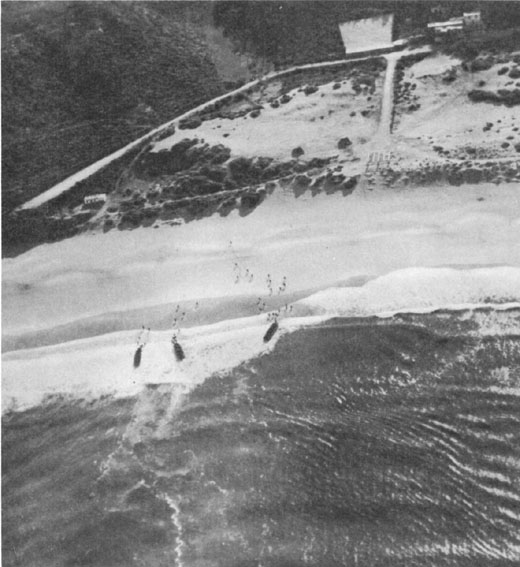 |
|
Infantry Landing Near Fedala
|
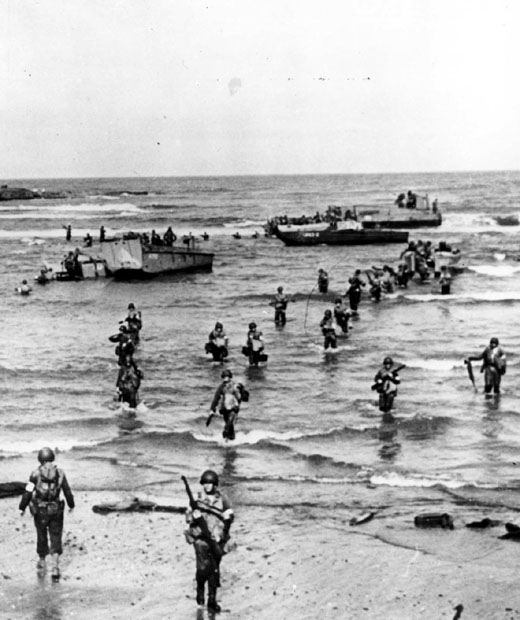 |
|
Directing Landing Craft Traffic off Fedala
|
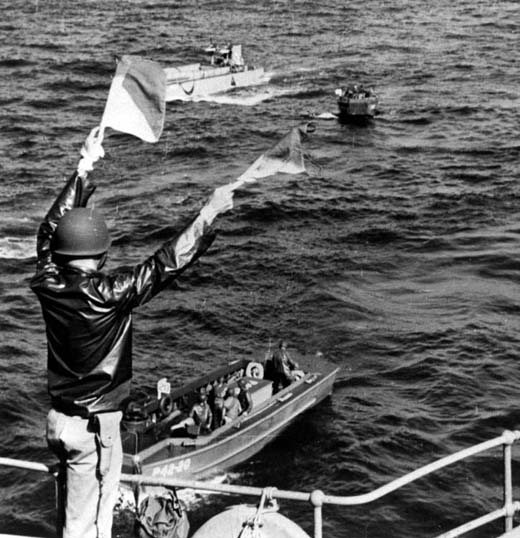 |
|
Unloading Equipment in Fedala Harbor
|
 |
|
The Beach of Les Andalouses
|
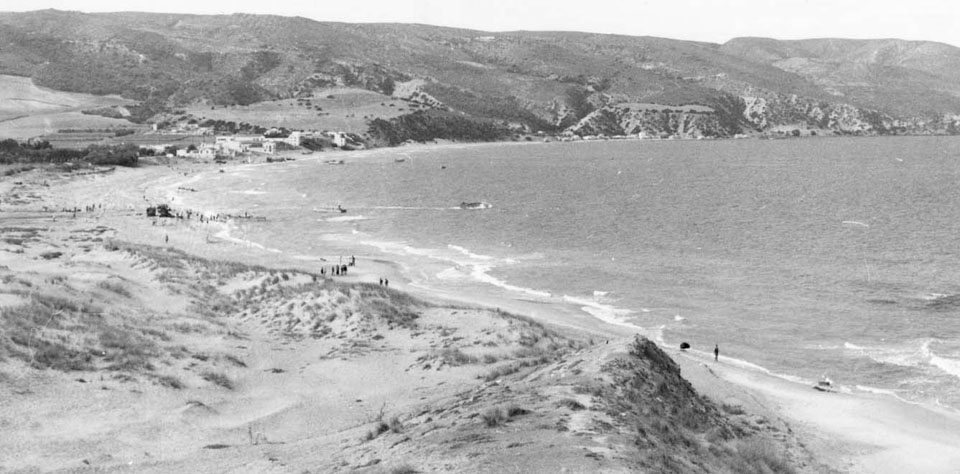 | \
|
Supplies on the Beach of Les Andalouses
|
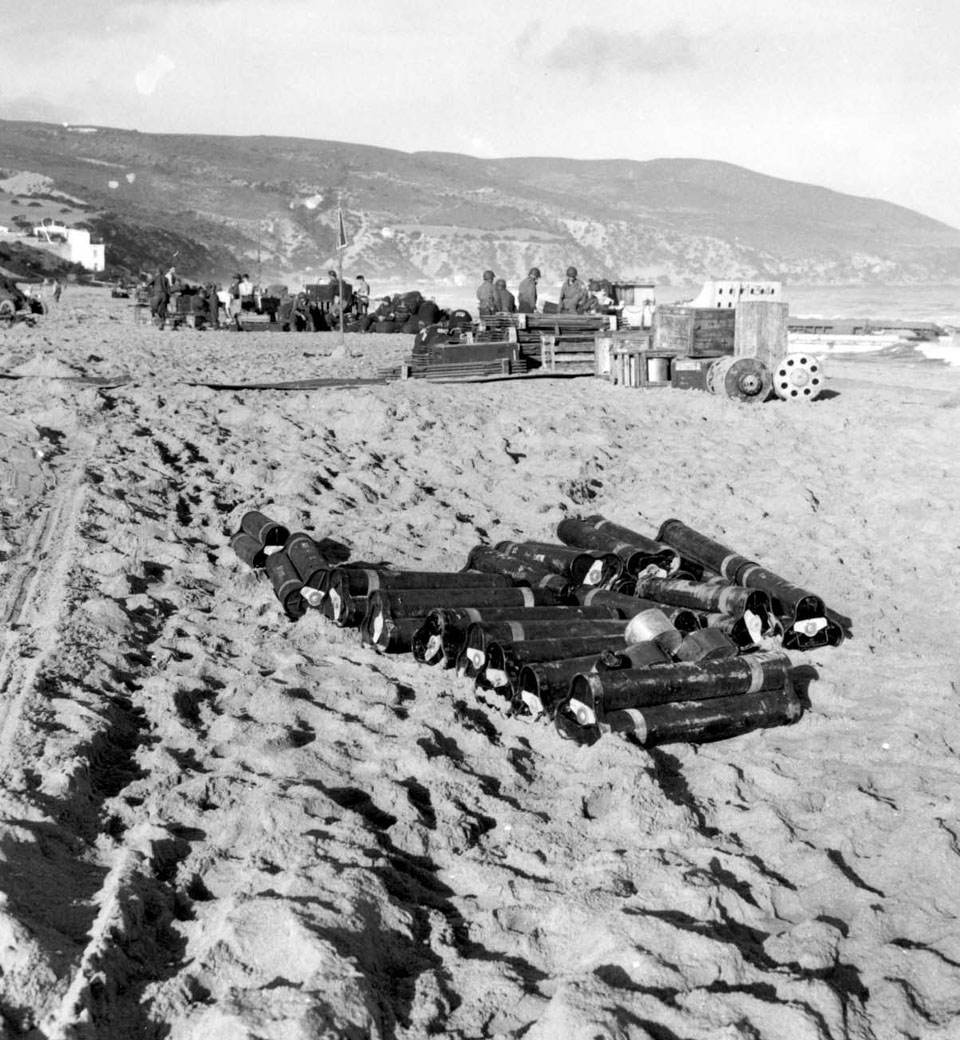 |
|
Unloading Supplies and Laying Prefabricated Track
|
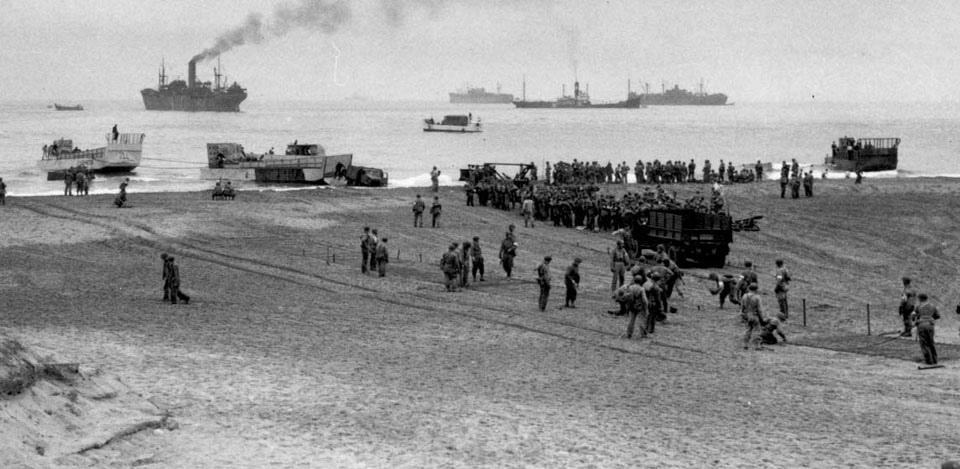 |
|
Guarding French and French Colonial Prisoners
|
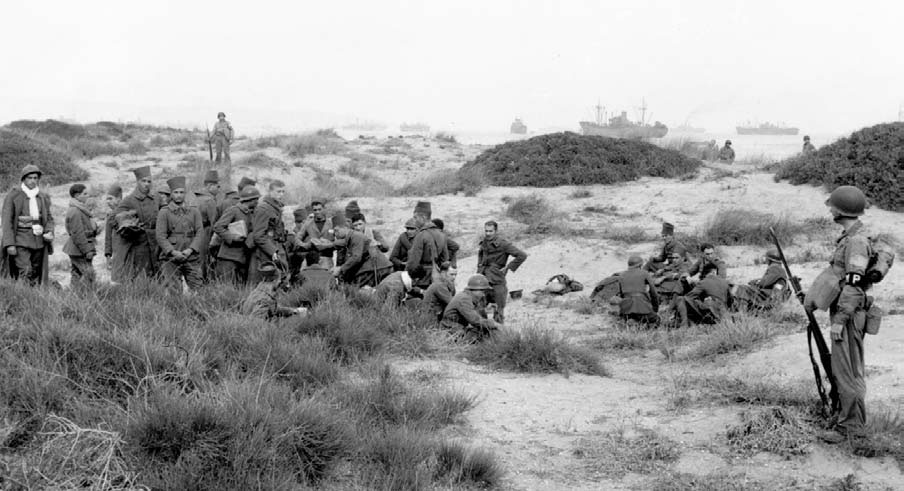 |
|
|
[  | |   ] ]
|







